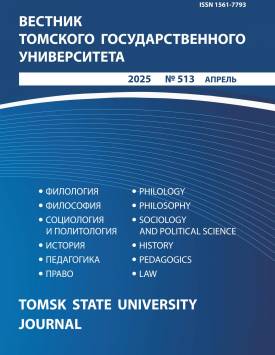Main directions of selection and feed supply for dairy cattle breeding in Vologda Oblast in the 1930s
This article aims to examine the main directions of breeding, feed supply, and productivity of dairy cattle farming in the Vologda Oblast's collective agricultural sector on the eve of the Great Patriotic War, thereby filling an existing gap in domestic historiography. The preparation of the scientific article utilized general scientific research methods such as analysis, synthesis, and systematization, as well as special historical-economic methods. The article is primarily based on new archival materials. Their analysis led the authors to conclude that in the 1930s, the completion of the collectivization of cattle in Vologda Oblast was accompanied by plans to specialize the livestock sector towards dairy farming. The foundation of the industry was formed by collective farms' dairy farms and specialized state animal breeding farms (sovkhozes). The number of cattle in the collective farms of Vologda Oblast increased from 311 thousand head in 1933 to 458 thousand head in 1939. A livestock census conducted in 1932 across the USSR to identify the main cattle breeds in the socialized sector of the economy subsequently allowed for the regional gradation of cattle breeds. In 1938, the Organizing Committee of the All-Russian Central Executive Committee for Vologda Oblast, when drawing up plans for breed zoning, identified districts for dairy herds of the Yaroslavl breed, the Kholmogory breed, and the mixed East Friesian and Kholmogory breed. Specialized state farms, two state breeding nurseries for cattle, the Vologda Regional Experimental Livestock Station, and the Vologda Institute of Dairy Farming were engaged in the tasks of rapidly and qualitatively improving the collective farm herd and increasing the productivity of cattle in the region. Some breeding stock was supplied beyond the region. Using specific data, the authors demonstrate that on the eve of the Great Patriotic War, Vologda Oblast assumed a leading position in the USSR regarding the development of sire breeds, the expansion of herds of breeding bulls, and the associated technologies for artificial insemination of animals. Concurrently with improving the breed composition and milk yield of the cattle herd, the issue of enhancing feed procurement and supply for dairy cattle farming was addressed. Agronomic techniques for silage crops, seed production of meadow grasses, creation of high-yielding artificial hayfields and pastures, and systems for their utilization were developed. Issues concerning the nutritional value of local feed resources, mineral supplements, etc., were studied. The results achieved in the breeding and feed supply for dairy cattle farming in Vologda Oblast in the 1930s were gradually introduced into the practice of collective farm production. The authors declare no conflicts of interests.
Keywords
Vologda region, executive power, collectivization, dairy cattle breeding, cattle breed census, directions of breeding and feed production, herd productivityAuthors
| Name | Organization | |
| Sablin Vasiliy A. | Vologda State University | Sablin@inbox.ru |
| Timoshina Svetlana V. | Vologda State University | timohina68@mail.ru |
References

Main directions of selection and feed supply for dairy cattle breeding in Vologda Oblast in the 1930s | Vestnik Tomskogo gosudarstvennogo universiteta – Tomsk State University Journal. 2025. № 513. DOI: 10.17223/15617793/513/18
